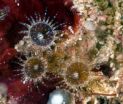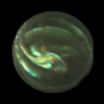(Press-News.org) Together with the Basque R+D centre's researchers, the group of advisers is made up of researchers from the Spanish Institute of Oceanography (IEO), the French Institute for Exploration of the Sea (IFREMER), the French Institute for Research for Development (IRD),and the Portuguese Institute for Fisheries and Sea Research (IPIMAR).This work comes within the 'European Community's Action Plan on Sharks' which has funding from the European Commission's Directorate-General for Maritime Affairs and Fisheries, and is set to take 15 months.
Shark are caught with fishing gear designed for the purpose as well as through by-catch in a whole host of fisheries meant for other species. Shark fishing in the various Oceans has increased considerably in recent years, so in-depth knowledge about their situation is needed. To this end, in 2009 the European Commission set up the Community Plan of Action on Sharks, the "CPOA Shark", which mainly seeks to help the European Union's fishing fleet to engage in the sustainable fishing of shark in community as well as in international waters. Specifically, the project will be studying the impact on shark populations of fishing activity targeting tuna, from the industry right up to the smallest scale coastal activity. For this purpose, the focus will be on analysing the catches of the various shark species that are made in the Atlantic, Indian and Pacific Oceans by the world tuna fleet, which are managed by the tuna Regional Fishery Management Organizations (RFMOs) (the ICCAT in the Atlantic, the IOTC in the Indian Ocean, and the IATTC and WCPFC in Eastern and Western Pacific, respectively).
The level of scientific knowledge on the shark populations on the high seas of the Atlantic, Indian and Pacific oceans is far from satisfactory. So the European plan is seeking to obtain expert technical advice in order to expand knowledge about shark fishing and the role played by the various shark species in the marine ecosystem. The advice of the AZTI-Tecnalia specialists and of the other centres involved will be contributing towards encouraging the fishing of this animal to be conducted in a more balanced way
The project, led by AZTI-Tecnalia, "has so far obtained information on the catches and effort, distributions of sizes, biology and ecology of the various species caught by different tuna fleets in the three Oceans. The aim is to characterise the fisheries as well as to address the lack of data and establish the priorities to be met for a future evaluation that will ensure the sustainable management of these populations", according to Hilario Murua, an AZTI-Tecnalia biologist and head of the scientific advisory committee of the 'Community Action Plan on Sharks'. "A second phase aims to put forward a framework for research into and monitoring of the fisheries, and thus ensure the sustainability of these vulnerable populations".
Considerable rise in catches
World shark catches rose from 600,000 tonnes in the early 1980s, to the estimated historical high of 900,000 tonnes in 2003, to fall to about 800,000 in 2007 and 750,000 in 2008.This trend is due to the great increase in the demand for shark products, mainly their fins, but also their flesh, skin and cartilage on the Asian markets, in particular.
Traditionally, European fleets have caught small shark off the coast and the scientific community has sufficient information on these catches. Yet the exploitation of shark on the high seas in the Atlantic, Pacific and Indian oceans has increased in recent years and has not been as accurately documented. This problem is compounded by the fact that shark is also fished by tuna vessels of different nationalities, mainly Asian fishing fleets that operate in these oceans. Despite the fact that these vessels have historically been involved in the fishing of tuna and swordfish, they are catching more and more ocean shark.
Shark are particularly vulnerable to overfishing, mainly due to their low reproductive capacity.This fact means that they are a species with a low capacity for recovery from overfishing and from other impacts caused by humans.
### END
Scientific advice to ensure the sustainability of shark populations in Ocean waters
2012-11-29
ELSE PRESS RELEASES FROM THIS DATE:
Next-generation treatments for Fragile X syndrome
2012-11-29
Philadelphia, PA, November 29, 2012 – A potential new therapeutic strategy for treating Fragile X syndrome is detailed in a new report appearing in the current issue of Biological Psychiatry, from researchers led by Dr. Lucia Ciranna at University of Catania in Italy.
Fragile X syndrome (FXS), the most common heritable form of autism and intellectual disability, is one of the most exciting areas in brain research at the moment.
A decade ago, Dr. Mark Bear and his colleagues discovered that an animal model for FXS was associated with a distinctive alteration in brain ...
Researchers create a fly to study how a normal cell turns cancerous
2012-11-29
The wing of a fruit fly may hold the key to unraveling the genetic and molecular events that transform a normal cell into a cancerous one. The study, conducted on Drosophila melanogaster by scientists at the Institute for Research in Biomedicine (IRB Barcelona) and led by ICREA researcher Marco Milán, has reproduced each of the steps known to take place when a healthy cell turns cancerous. The researchers have thus provided an inexpensive and effective model that will allow the scientific community to scrutinize the genes and molecules involved in each step. Given that ...
Homicide spreads like infectious disease
2012-11-29
EAST LANSING, Mich. — Homicide moves through a city in a process similar to infectious disease, according to a new study that may give police a new tool in tracking and ultimately preventing murders.
Using Newark, N.J., as a pilot case, a team of Michigan State University researchers led by April Zeoli successfully applied public health tracking methods to the city's 2,366 homicides between 1982 and 2008. They found the killings were not randomly located but instead followed a pattern, evolving from the city's center and moving southward and westward over time.
Like ...
Cancer drug shows promise in eradicating latent HIV infection
2012-11-29
Bethesda, MD—Breakthrough drugs have made it possible for people to live with HIV longer than ever before, but more work must be done to actually cure the disease. One of the challenges researchers face involves fully eradicating the virus when it is latent in the body. A new report appearing in the December 2012 issue of the Journal of Leukocyte Biology suggests that a cancer drug, called JQ1, may be useful in purging latent HIV infection by activating the virus in the presence of potent therapy – essentially a dead end for the virus.
"This drug may be useful as adjunctive ...
Travels in northeastern Brazil: Unfolding the reptile fauna of Lençóis Maranhenses
2012-11-29
In order to be effective, a Conservation Unit must have available a list of the species that live within it. They also should have detailed information about the distribution of species among the available habitats. It would be difficult to correctly plan the conservation actions and/or monitoring programs without some minimal knowledge about the species (who are the object of those measures). "This is why our study is so important to the park", said Dr. Miranda from Universidade Federal do Maranhão (CCAA/UFMA), leading author of the article, published in the open access ...
An ocean away: 2 new encrusting anemones found in unexpected locations
2012-11-29
As a result of field work by associate professor James Davis Reimer and two graduate students from the University of the Ryukyus in Okinawa, Japan has found two new species of encrusting anemones, or colonial zoanthids, in unexpected locations. The species belong to the genus Neozoanthus, which was previously known only from a single species in the Indian Ocean. Surprisingly, the new species were found in the Pacific Ocean, in southern Japan and on the Great Barrier Reef, Australia. The study was published in the open access journal ZooKeys.
The only previous species ...
Black hole upsets galaxy models
2012-11-29
This press release is available in German.
A group headed by Remco van den Bosch from the Max Planck Institute for Astronomy has discovered a black hole that shakes the foundations of current models of galaxy evolution. This monster has 17 billion solar masses and is thus significantly heavier than the models predict. And even more significantly: the object could be the most massive black hole known to date.
Astronomers believe there is a super-massive black hole at the heart of every galaxy. Its mass ranges from several hundred thousand solar masses to a few billion. ...
Inviting customer complaints can kill business: UBC research
2012-11-29
Giving customers a chance to complain can be a bad idea if customers believe they're to blame for a product's failure, a new study from the Sauder School of Business at UBC shows.
"It's commonly assumed that giving customers a chance to voice grievances allows companies to maintain relationships," says Marketing Professor Darren Dahl, who co-authored the recent Journal of Marketing study with PhD student Lea Dunn.
"But our research shows that when a person feels implicated in a product's failure – think building Ikea furniture – they're more likely to shift blame to ...
Maths helps mobiles & tablets match eyes' ability to switch from sunshine to shadow
2012-11-29
Researchers have pushed the boundaries of High Dynamic Range (HDR) video to match our own eyes' ability to cope with the real world's ever rapidly changing light intensity - such as sun simply going behind clouds. Now researchers at WMG at the University of Warwick, have found a way to compress and stream HDR video directly to monitors and mobile devices, such as an iPad, bringing enormous benefits to industries including gaming and security.
Researchers at WMG at the University of Warwick, working in partnership with spinout company goHDR Ltd, have succeeded in achieving ...
First-ever hyperspectral images of Earth's auroras
2012-11-29
WASHINGTON, Nov. 29—Hoping to expand our understanding of auroras and other fleeting atmospheric events, a team of space-weather researchers designed and built NORUSCA II, a new camera with unprecedented capabilities that can simultaneously image multiple spectral bands, in essence different wavelengths or colors, of light. The camera was tested at the Kjell Henriksen Observatory (KHO) in Svalbard, Norway, where it produced the first-ever hyperspectral images of auroras—commonly referred to as "the Northern (or Southern) Lights"—and may already have revealed a previously ...






